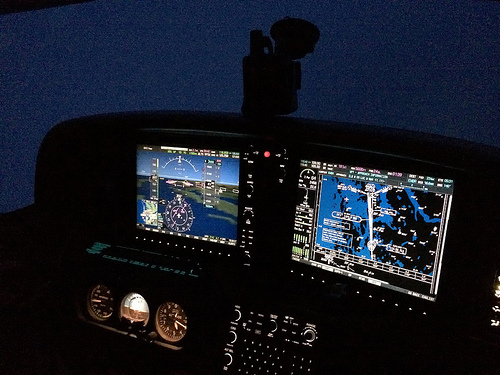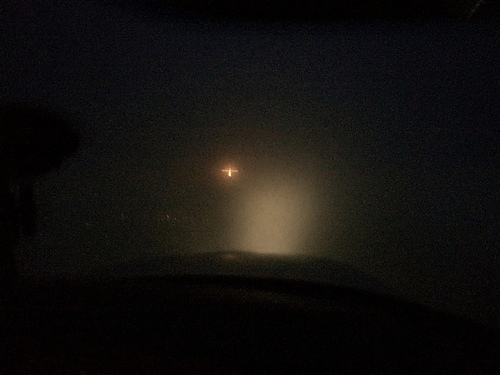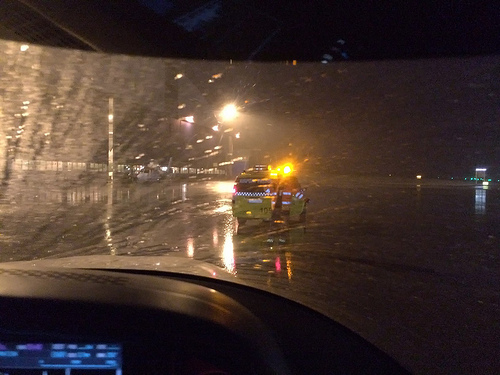Night flight with ILS into Rotterdam cutting through some frontal weather
A passenger used the iPhone with a cable connecting it to the avionics stack to record the approach into Rotterdam. We were coming from France and I expected to cross some frontal weather (with some thunderstorm activity) in the South of the Netherlands while flying towards Rotterdam. Nowadays, Dutch ATC has this nice weather overlay on their radar screens giving them additional information besides the stormscope information that I have in my aircraft. This extra information helps is staying clear of storm cells.
Yes Chestnut and JasonC: night flying is great. It is another dimension to flying at a time of day that is also often convenient to me for traveling (that is flying). My airport Rotterdam allows me to come in at night until 23:00 LT every day and many destinations in France and elsewhere allow you to take-off or land 24 hrs a day (with Pilot-Controlled-Lights). It is quiet in the air with only you and the airliners. And the views (if you can see something that is) can be stunning and great. I fly quite a large percentage of my flights at night or in the evening.
I like night flying too!
I love night flights! Don´t tell the engine it is dark :-)
Yes, the weather was at the minima.
Great weather at your destination. 
Some night flying pictures of the last week
Enroute from Rotterdam to Bergen (Norway) with on the right screen the ILS procedure depicted of the landing runway at Bergen. I am currently flying downwind. Next pictures show how I close into the runway and finally the follow me car to take me to the taxi-stand.




I have only about 25hrs at night – due to
The TB20’s LH wingtip cluster is poor for doing right turns on the taxiway. My recently fitted LEDs are much brighter but I have not yet tested them at night. One US pilot put a cluster in the RH wing also (337 Field Approval – a big job in that case; I saw the documentation) and that is a great solution but it’s a lot of work. That link above also mentions another possible solution in the form of illuminated wingtips, but the late-GT wingtips are very pricey.
Re cameras, one really needs a recent model DSLR. A couple of years ago a new sensor came out from Sony. The first camera with it was the Pentax K5, which I have, and you get pretty good shots at ISO 50000+. I think every major name is using it now.
A Panasonic Lumix FT2 compact digital, on movie and night mode, held out of the opening in a Pa28. As regards landing light position, the worst is close in on the left wing, so it illuminates the back of the prop.
I think it is much better to have the landing light in/under the nose, as it will shine on the centerline.
I heard it’s somewhat beneficial to have the lights in the wing – wing lights are further away from the vibrations of the engine & bulbs tend to last longer. (or so the argument goes)
What I have found though, is that standard lights on most light aircraft (pardon the pun) are woefully inadequate for navigating anywhere on the ground. There’s a lot of STCs in the market for retrofit lights…